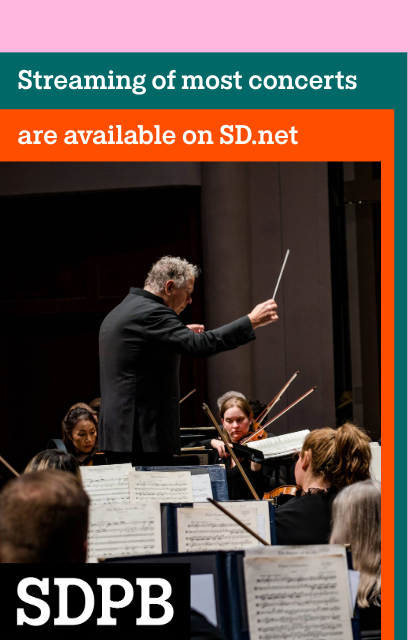Written by Anna Vorhes
Born
Baptized December 17, 1770, Bonn
Died
March 26, 1827, Vienna
Instrumentation
flute, two oboes, two clarinets, two bassoons, two horns, two trumpets, timpani, strings
Duration
35 minutes
Composed
1806 summer and fall
World Premiere
privately in the home of Beethoven's patron Prince Lobkowitz in March 1807; publicly April 13, 1808, Vienna
Something to listen for
This symphony harks back to Beethoven's classical roots and the time when Haydn was his mentor. As a result, it is shorter than the Eroica, and the movements are relatively predictable. The first movement borrows a Haydn technique, opening in a slow tempo and a different key than the movement. Listen as Beethoven begins in B-flat minor while the work will be in B-flat major. For a moment of innovation, Beethoven will briefly consider the unusual key of B major but does resolve to the B-flat major for the Allegro. The movement is the usual exposition, development and recapitulation of sonata form. The timpani will signal the recapitulation as the work moves to a close. A 22-measure drum roll builds to the exciting return of the first melody. The second movement includes a sense of heartbeat supporting the melodies. The clarinet will offer a poignant second theme. The third movement is a scherzo with a sense of rondo as the trio returns creating an ABABA format. (A more complete explanation is below.) Listen for the end of the final scherzo where the horns interrupt a full repetition of the first section. The final movement keeps the energy high, scampering through the movement. When you hear the first theme at an unusually slow tempo, you'll know the symphony is almost done.
Program Notes
The Eroica Symphony, Beethoven's Third, was not a complete success. Music lovers recognized something different, but as with many innovations, acceptance was not complete. Beethoven began work on what would become the stunning Fifth Symphony. He also continued to expand his social circle.
Count Lichnowsky began paying Beethoven a stipend that would ensure the composer at least a passable living without worrying about shelter and food. He also introduced the composer to many of his own circle, including Silesian Count Oppersdorff who had an estate in what is now Poland. While Beethoven was visiting the estate, the Count's chamber orchestra performed his Second Symphony. The composer was charmed, and was happy to accept a commission from Oppersdorff. Sketches for his Fifth Symphony exist, dated before work began on the Fourth Symphony. The new work goes back to older patterns, not as innovative as the Third or the Fifth Symphonies. It still is easily identifiable as Beethoven's work, however.
This is the smallest orchestra Beethoven requested. Only one flute instead of the usual two, and no trombones (which he will introduce in the Fifth Symphony). The structure is compact after the hour long Eroica. This work is only thirty-five minutes. He wrote it quickly, perhaps because he was using the older tools that were so familiar, or perhaps because he was clear about how to please Oppersdorff who was so delighted with the Second Symphony. Whatever the reason, the resulting symphony is a gem in the group of only nine symphonies. Writing for the BBC Proms, Lindsay Kemp says,
"But it is a thoroughly Beethovenian work nevertheless, taut with muscular strength, propelled with unstoppable momentum and shot through with its composer's unmistakable stylistic fingerprints."
The slow introduction gives a sense of premonition of the serious slow announcements of the Ninth Symphony. Leonard Bernstein, talking about the Fourth Symphony, claims this introduction leads to the greatest surprise of Beethoven's writing: a symphony full of fun and joy! When we finally arrive at the allegro tempo of the first movement, the mood changes to one of delight which never leaves through the remaining movements.
The Second movement is a tender adagio with some interruptions. The pace is not slow, nor is it fast. There is a pulsing heartbeat in the way Beethoven presents the movement. The clarinet has our attention as the second melody is introduced. The third movement is an expected scherzo with a twist in form and syncopation to keep the whole movement upbeat. The form is similar to a minuet or other dance form, but Beethoven offers us plenty of time to hear what he created. While the usual organization of a dance movement is section A (with small sections aabba with each letter representing a melodic variation) followed by a section B in a different character (this time with small sections bbccb). Then A returns, but since we've heard it the melodic variations aren't repeated (now aba). In this third movement we have the A as above, followed by the B, then we repeat the A again, followed by the B again, and finally back to A one more time. This time Beethoven allows the horns to be impatient and interrupt the final repetition, but we have by now got the structure of the movement clearly embedded in our ears!
The last movement feels like a perpetual motion machine with continual sixteenth notes through the movement. The effect is full of energy without being overwhelming. Indeed, at one point toward the end the bassoons are given an especially tricky passage which is then marked dolce (sweetly) by the composer. Getting beyond the notes to create something both rapid and sweet requires virtuosic musicians! Do listen for the first melody of the movement to return at a slower tempo. That will tell you the end is in sight.
Reactions to the work have been varied. Carl Maria von Weber was not a fan. After hearing a rehearsal he imagined the bass players saying, "I have been made to caper about like a wild goat, and to turn myself into a mere fiddle to execute the no-ideas of Mr. Composer."
On the other hand, Robert Schumann was a fan. He did recognize that the Third Symphony and the Fifth Symphony both offered more meat, but this work could hold its own in Schumann's opinion. He described it as "a slender Greek maiden between two Nordic giants".


